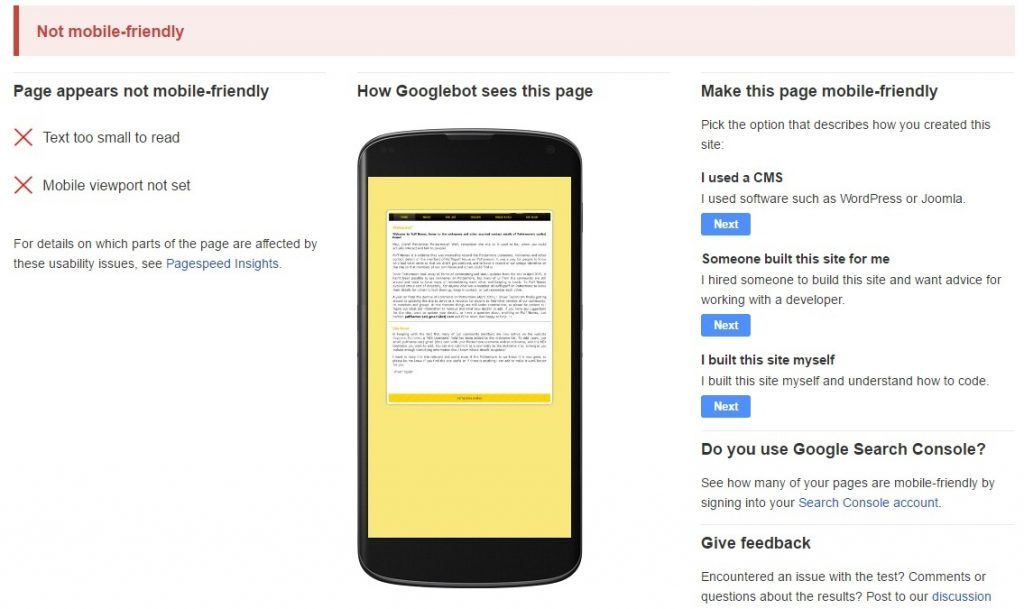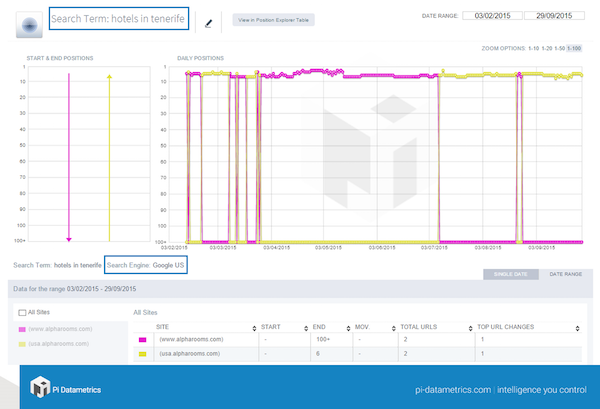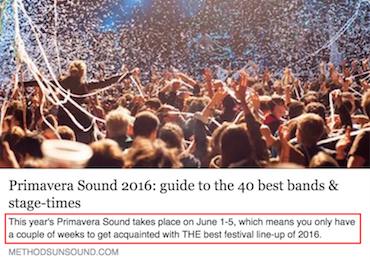
An SEO audit is standard procedure for any website. In fact, if you are serious about your internet business, you will make sure you do it frequently.
Unlike a traditional audit, this one is performed solely for marketing purposes.
A properly done SEO audit should give you a better insight into your website, individual pages and overall traffic. It is a great way to improve performance allowing you to rank better in the SERPs.
According to gotchseo.com, an audit should be performed:
- At the beginning of a new project
- At the beginning of a new quarter
But, like most other things, you have to take this with a grain of salt.
Yes, an SEO audit helps us determine how our website is performing. But, if you are a small website, you do not have to overdo it. Concentrating on stats can be a waste of time especially if there are other things that you have to take care of.
But, if you are medium sized website and you noticed drop in traffic, perhaps it’s better to perform a timely audit and discover the root of the problem.
Performing an audit for audit’s sake is a waste of time.
Audit strategy
Before anything else, you need to create a viable strategy that will help you establish your goals.
There are numerous things that can be improved with an audit. You can gain insight into your competition, you can analyze your keywords, you can improve technical aspects of the website etc. Nevertheless, when people contact an SEO expert they only wish to know one thing…
How to improve rankings?
This is a bad way of putting things given that an SEO audit is a complex procedure. It is meant to analyze multiple aspects of your business and based on them, help you understand what is good and where you can improve.
That being said, an SEO auditor needs to perform:
- Technical analysis
- On-Page analysis
- Off-Page analysis
- Competitive analysis and keyword research
1) Technical analysis
First thing that you have to determine is whether your website is working properly. This can be done with a technical analysis.
It is highly recommended that you always start with this step. If you have a bad basis, you won’t be able to build your website from the ground up. You wouldn’t build a home on a bad terrain, would you?
Technical analysis helps us with various things that we can group into:
- Accessibility
- Indexability
Accessibility
As the name says, accessibility is connected to Google’s and user’s ability to access the website. If your potential visitors are unable to see your pages, there is no point in creating new content.

Accessibility and good user experience go hand-in-hand with search.
Image by Paul Veugen on Flickr; some rights reserved
First thing that you have to check is your robots.txt file and robots meta tags. These two are important as they restrict access to certain areas of your website. Sometimes, a webmaster might have inadvertently blocked certain pages disabling Google from accessing them.
Both meta tags and robots.txt files need to be checked manually in order to make sure that everything is ok.
XML sitemaps are another important aspect of your website. They create a map for Google crawlers. Bear in mind that your XML sitemap needs to be properly formatted and submitted to webmaster tools account so that it can be accessed.
Another important thing for your accessibility is overall website architecture.
Here, a person doing the audit needs to make sure that you only need a few clicks from homepage to destination page. The smaller the number, the easier for crawlers to access that page.
Redirects can also cause issues. Occasionally, you may delete or relocate your content. However, this means that crawlers are now unable to access that page. In order to allow access, you need to create a redirect leading them to moved page.
So, these are all the procedures you have to perform in order to appease Google. But, what do we do with unsatisfied users?
There are certain things that you have to keep in mind when it comes to your visitors.
First and foremost, if a person is unable to browse freely, he will quickly bounce from your website. In that regard, it is important to improve your website speed.
Even if you prefer having a nice and interactive interface, you will have to consider what kind of an impression it leaves on people seeing that page. Most of us surf the internet in order to get quick and reliable information. If we can’t do that on one website, we will find an alternative.
Same goes for mobile devices. Nowadays, most people use mobile devices to access the Internet. Having that in mind, your website needs to be mobile friendly so that the visitor can have all the options which they would otherwise have on a desktop computer.

Indexability
Now, if you have performed everything correctly during the first step, you are ready to go through indexability.
When it comes to Google, accessibility and indexability go hand in hand. Both of them are necessary in order for your pages to be shown to end user.
Remember; accessibility refers to crawlers being able to access your pages while indexability refers to those pages being presented within the search engine after being accessed.
You might wonder if robots are already able to see your content, why wouldn’t they show these pages to users?
The first thing that comes to mind is Google penalty.
In most cases, this will be the reason why some pages will not be shown. Have in mind that crawlers work differently from website to website. If you are a big company with lots of content, your pages will be indexed almost immediately.
On the other hand, individual bloggers who occasionally post will have their content indexed more slowly.
Most people will start panicking at this point, thinking that Google has hit them with a penalty only to discover they have an accessibility issue or some other minor problem.
Nevertheless, if you actually did get a penalty, you would receive a message in your webmasters tool account.
After that, procedure is as follows:
- Identify the reason for penalty
- Rectify the issue
- Request reconsideration from Google
The worst thing that you can do is to deny your actions prolonging the agony. Face the charges, make the changes and resolve the issue.
2. On-page analysis
After the initial technical part, your website should look dandy.
You’ve made sure that everything is in order, that both people and robots can access your website and that everything is in working condition.
Now, we need to consider pages themselves.
There are two ways to view on-page analysis:
- General content issues
- Individual page issues
General content issues
Logically, every post you create has to make sense. From an SEO perspective, it is really bad to have various conflicting topics that have nothing to do with the website’s main idea.
There are a lot of bloggers who receive money for promoting various content and products. While this may be lucrative in a short run, it can have disastrous consequences for your optimization. Simply put, stick to your guns and continue writing on one general topic.
When it comes to general content issues, a lot of bloggers encounter keyword cannibalisation and duplicate content.

In the example above, Alpharooms’ US and UK sub-domains are competing against each other. As you can see, only one version ranks at any one time.
Why does this happen?
A lot of people, while trying to promote their website and rank higher in Google, start writing on the same exact topic. This may be good for your traffic as it will encourage visitor’s interested in topic to keep coming, but it can also lead to duplicate content.
When you write two articles with same or similar content, Google gets confused leading to indexation issues. It may index more pages than there actually are on your website.
Similar things happen with keyword cannibalization.
In this case, the owner of the website tries to rank for the same keyword from different pages. Google will not acknowledge various pages, only the strongest one. As a result, you will have a lot of different articles that are useless in terms of SEO and cannot be reached from the search engine.
Individual page issues
Individual page issues refer to the way each page is written and structured.
You probably know that good content is the key to good ranking.
Before we mention anything else, it’s necessary to emphasize that every article needs to be well-structured, with the end user in mind. This is not only important for the search engine but also for all the bloggers and visitors who are going to link or share said content. Without a good copy, you shouldn’t even try optimizing your website.
Let’s start with your URL…
It needs to be nice, clean, to describe content properly and briefly. If you need to separate words, it is better to use hyphens. Lastly, it has to have your main keyword.
Based on this, it is logical that your title should also have the main keyword in it and to be short.
As for the content, make sure to create longer articles. In today’s SEO world, you require at least 500 words to be visible. Your article needs to provide value to the reader, to be unique, to have LSI keywords, it needs to have proper grammar and to read well.
At the same time, your images also need to be optimized as this will give them a chance of ranking within Google image search.
Back in the day, meta descriptions were a very important SEO tool. Nowadays, they have more of a promotional use. Still, make sure to include nice description as they will impact conversion rate.

Links are also relevant.
Still to this day, a lot of people hate linking to other resources thinking that this helps their competition.
However, SEO professionals know better.
Linking to other articles is excellent for your website as it improves the quality of the content. It makes it more relevant and trustworthy (as long as you link to trustworthy website).
Make sure that all your links work properly, that they are relevant, healthy and with proper keywords.
3) Off-page analysis
Ultimately, it all comes down to strength of your domain.
Basically, everything that has been done in first two steps (during technical and on-page analysis) is performed so that your website would be better and more visible to Google. And this is where we come to off-page analysis.
In a way, off-page ranking factors are the result of your work. They show how poplar your website is, whether people are linking to it and from which websites, is it trustworthy etc.
Here, we can start by mentioning trust factor.
What does trust means in terms of SEO?
It means that a website is trusted by the Google search engine. In other words, if you are steering clear from all the negative SEO practices (so called, black hat SEO) you will gain more trust.
This is the first step that you have to take before anything else. Google is constantly being improved and with it, there is less of a chance to manipulate the system.
Nevertheless, some people still do it. Being trustworthy is not only good for the search engine; it is important for your overall reputation.
Same with real world companies, being involved in unlawful practices can lead to disastrous long term consequences for your organization. Due to this fact, it is necessary to remain trustworthy and abide by Google’s webmasters guidelines.
Next, you need to make sure that your content is popular among readers and other bloggers.
In the end, all we create on the Internet is for other users. With that in mind, good website will constantly see an increase in traffic, more and better links, more social mentions, longer time on website and smaller bounce rates by the visitors.
In a way, off-page analysis should show us how other people react to our website.
Successful bloggers should see an increase in all these stats simultaneously. If you start getting a lot of links and your social engagement stats do not improve or if they drop, it can be a red flag for Google as it may signalize that you are doing something fishy.
4) Competitive analysis and keyword research
After analyzing and dealing with internal issues, we are prepared for keyword analysis. In the SEO world, keyword research and competitive analysis are almost synonymous.
Why do I say that?
Because the keyword is the smallest measurement unit in SEO. By analyzing those keywords, you are at the same time analyzing your competition.
Let’s use this example.
You are producing food. Your competitor has X products (keywords) each one giving different results. By analyzing them, you are able to make your own strategy deciding where you can compete and determining which products (keywords) are untouchable.
Basically, there are two things that you need consider with each keyword: difficulty and traffic.
Difficulty shows us how hard or easy is to rank while traffic shows us how many people search for that term during one month.
Your ideal keyword should be somewhere in the middle, with medium difficulty and medium volume. However, if you wish to beat your competition and continue increasing your traffic, it is necessary to find keywords that are performing above the average (for example, keywords with medium difficulty and high traffic or keywords with low difficulty and medium traffic).
An auditor needs to consider numerous options before recommending several keywords to his client. These keywords will be the backbone of your website and based on them, you can expect slower or faster growth.
Analysis is performed by using various SEO tools.
Google keyword planner is a great starting point. When it comes to paid tool, Ahrefs is a great alternative.
Conclusion
SEO auditing is a crucial process for your website.
People who wish to make a blogging career usually believe that popularity and good writing skills are enough for a success. This is not true as there are other factors involved.
With an SEO audit, you can discover what is wrong and what you need to improve. With it, you can make your website better and more visible to Google leading to more traffic and conversion.
Have you ever tried doing EEO audit by yourself? What was your biggest issue? Tell us in the comments section below…
Related reading
Amazon is proving to be a serious contender in the Google-dominated search space. Here’s how to get started optimizing for Amazon SEO.
SEO rankings are key to surviving the virtual world and staying relevant. Follow these steps to fix the 7 most common SEO mistakes and regain your rankings.
You may overlook meta tags importance knowing search engines don’t consider them ranking factors, but snippets influence UX, and therefore SERPs.



